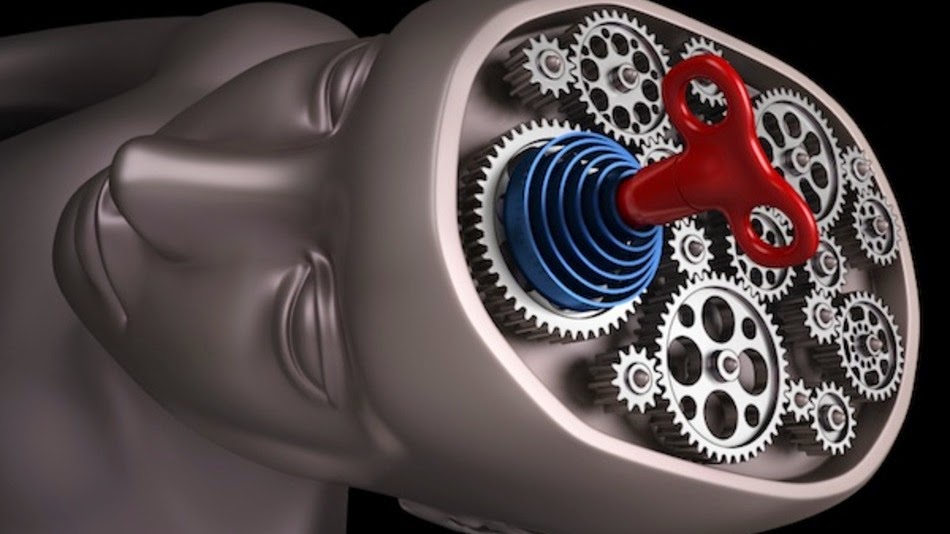 Nicholas West
Nicholas West
Activist Post
A vast array of direct mind control techniques are being announced in the wake of investment from government via the U.S. BRAIN project and Europe’s counterpart the Human Brain Project – all told, billions of dollars are being spent to decode what makes us tick and how to change it.
We are being given gadgets that create a brain-computer interface, magnetic manipulation via “neural dust,” high-powered lasers, using light beamed from outside the skull, the implanting and erasure of memories, and even the direct uploading of the contents of our brain.
Despite all this, some have stressed that the brain is not consciousness; therefore, there is always a built-in protection that the aware mind can erect to thwart outside attacks. Neuroscientists, however, are now claiming for the first time to have found absolute proof that consciousness is completely dependent on brain structure. In fact, it can be identified as a literal on/off switch that can be physically tripped by electrical stimulation, thus closing down all awareness in an instant.
Here are some key passages from their findings:
In a study published last week, Mohamad Koubeissi at the George Washington University in Washington DC and his colleagues describe how they managed to switch a woman’s consciousness off and on by stimulating her claustrum. The woman has epilepsy so the team were using deep brain electrodes to record signals from different brain regions to work out where her seizures originate. One electrode was positioned next to the claustrum, an area that had never been stimulated before.
When the team zapped the area with high frequency electrical impulses, the woman lost consciousness. She stopped reading and stared blankly into space, she didn’t respond to auditory or visual commands and her breathing slowed. As soon as the stimulation stopped, she immediately regained consciousness with no memory of the event. The same thing happened every time the area was stimulated during two days of experiments (Epilepsy and Behavior, doi.org/tgn).
To confirm that they were affecting the woman’s consciousness rather than just her ability to speak or move, the team asked her to repeat the word “house” or snap her fingers before the stimulation began. If the stimulation was disrupting a brain region responsible for movement or language she would have stopped moving or talking almost immediately. Instead, she gradually spoke more quietly or moved less and less until she drifted into unconsciousness. Since there was no sign of epileptic brain activity during or after the stimulation, the team is sure that it wasn’t a side effect of a seizure.
Koubeissi thinks that the results do indeed suggest that the claustrum plays a vital role in triggering conscious experience. “I would liken it to a car,” he says. “A car on the road has many parts that facilitate its movement – the gas, the transmission, the engine – but there’s only one spot where you turn the key and it all switches on and works together. So while consciousness is a complicated process created via many structures and networks – we may have found the key.” [emphasis added] (Source and full report can be found here.)
 Professor of neuroscience, Anil Seth, is one who urges caution about drawing conclusions from just one patient who already had an organic deficiency. However, the claustrum was the exact area that Francis Crick (who identified the structure of DNA) and his colleague Christof Koch had focused on in 2005. Though Crick is now deceased, Koch summarized the significance of such findings.
Professor of neuroscience, Anil Seth, is one who urges caution about drawing conclusions from just one patient who already had an organic deficiency. However, the claustrum was the exact area that Francis Crick (who identified the structure of DNA) and his colleague Christof Koch had focused on in 2005. Though Crick is now deceased, Koch summarized the significance of such findings.
“Ultimately, if we know how consciousness is created and which parts of the brain are involved then we can understand who has it and who doesn’t,” says Koch. “Do robots have it? Do fetuses? Does a cat or dog or worm? This study is incredibly intriguing but it is one brick in a large edifice of consciousness that we’re trying to build.”
It is that typical scientific reductionism which finds these arguments appealing, just as Koubeissi stated above that he would liken the human organism to a car with there being a similar ignition switch to put all parts in motion – the claustrum. Just like a machine, consciousness can also then be physically built – or torn down.
Others such as researcher Jon Rappoport see a logical fallacy built into conventional scientific thinking because they already assume what they are trying to prove – that the seat of consciousness is somewhere in the brain and could not be non-material.
And yet a wide body of scientific and spiritual research into the role of frequencies, the holographic, quantum, and multi-dimensional nature of the universe seems to suggest that human consciousness is almost certainly non-material; or, at the very least, both.
As conventional scientists continue drilling further into the workings of what they assume to be a human machine, reducing us to ever smaller parts, they are acknowledging that there is something special hinting at a conductor that makes it all work. If that conductor is orchestrating from within, then it can be replaced through direct mind control. If it comes from without, it is free to roam and communicate through all time and all space, and be forever free from all attempts to build the material prisons desired by technocrats.
What do you think? Please leave your comments on this mind-bending topic, and include your sources from both sides for further research.
Recently from Nicholas West:


Be the first to comment on "Mind Control Scientists Claim Ability To Turn Off Consciousness"